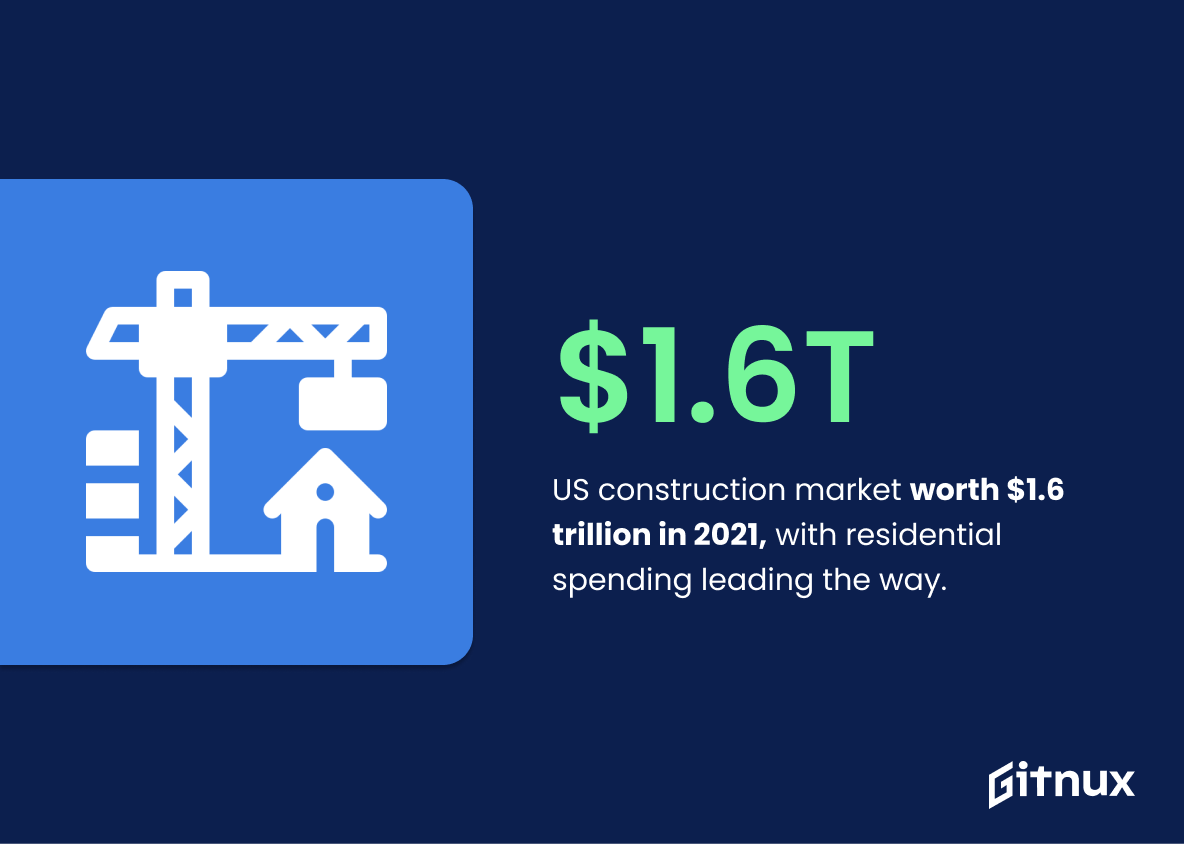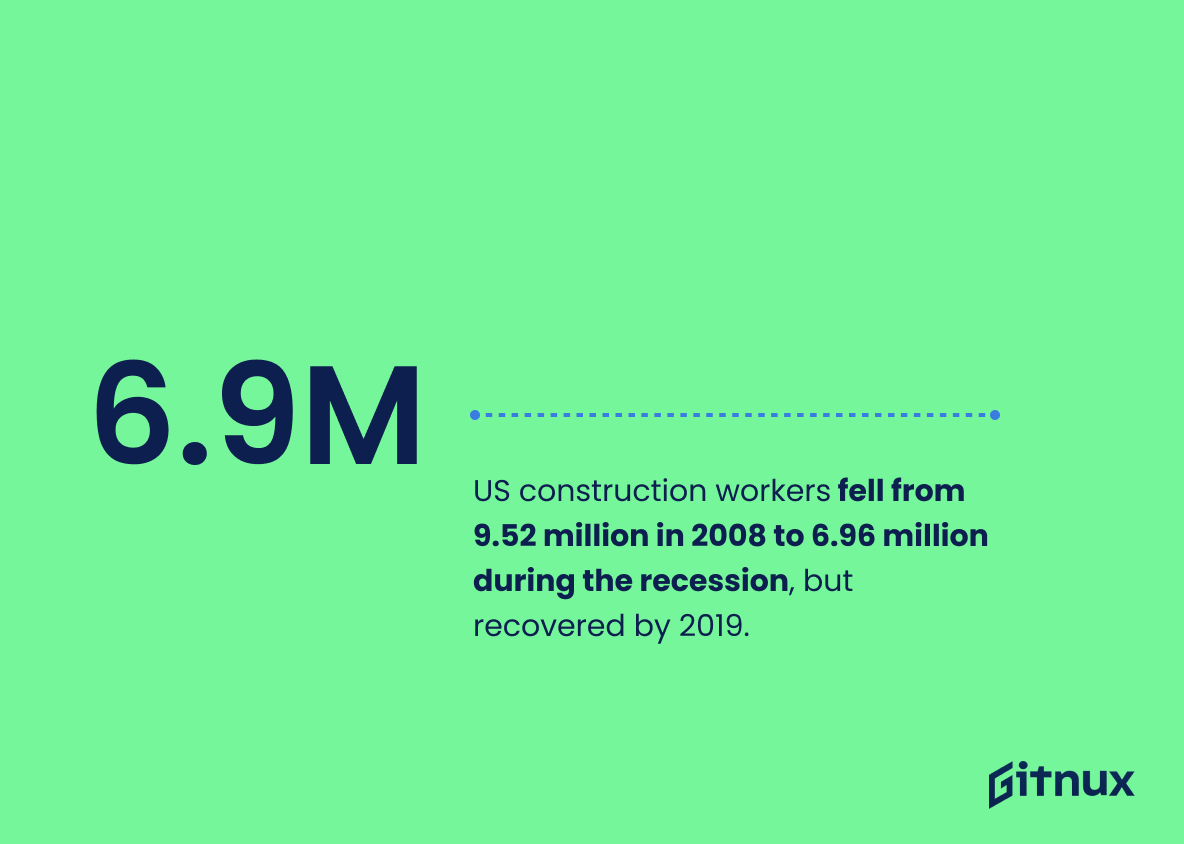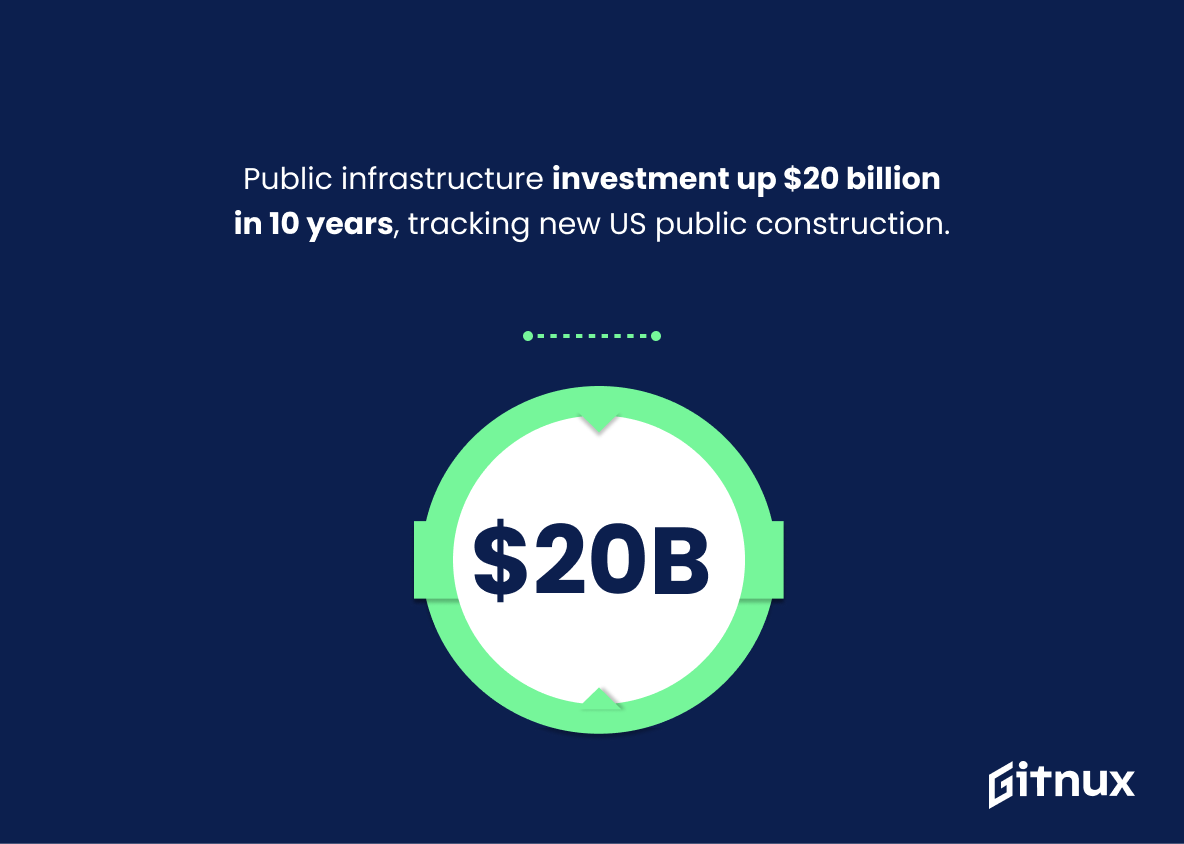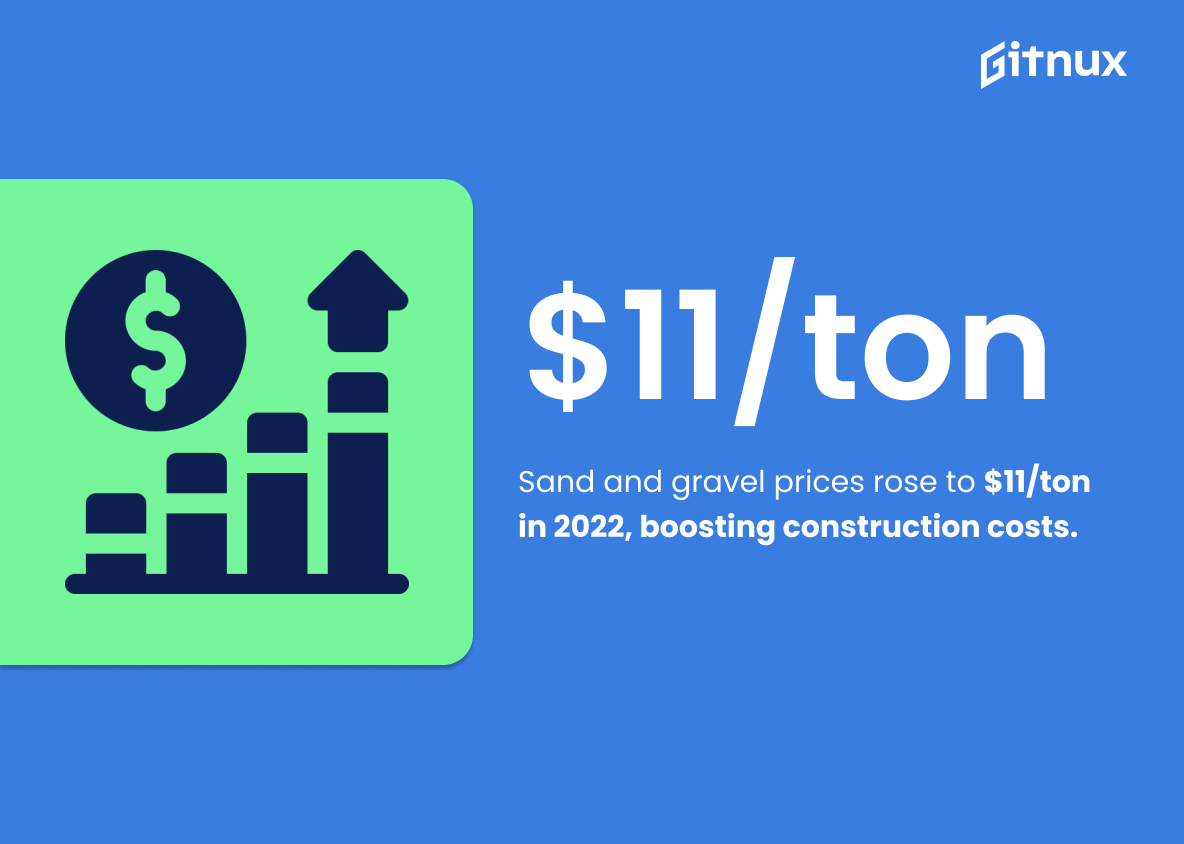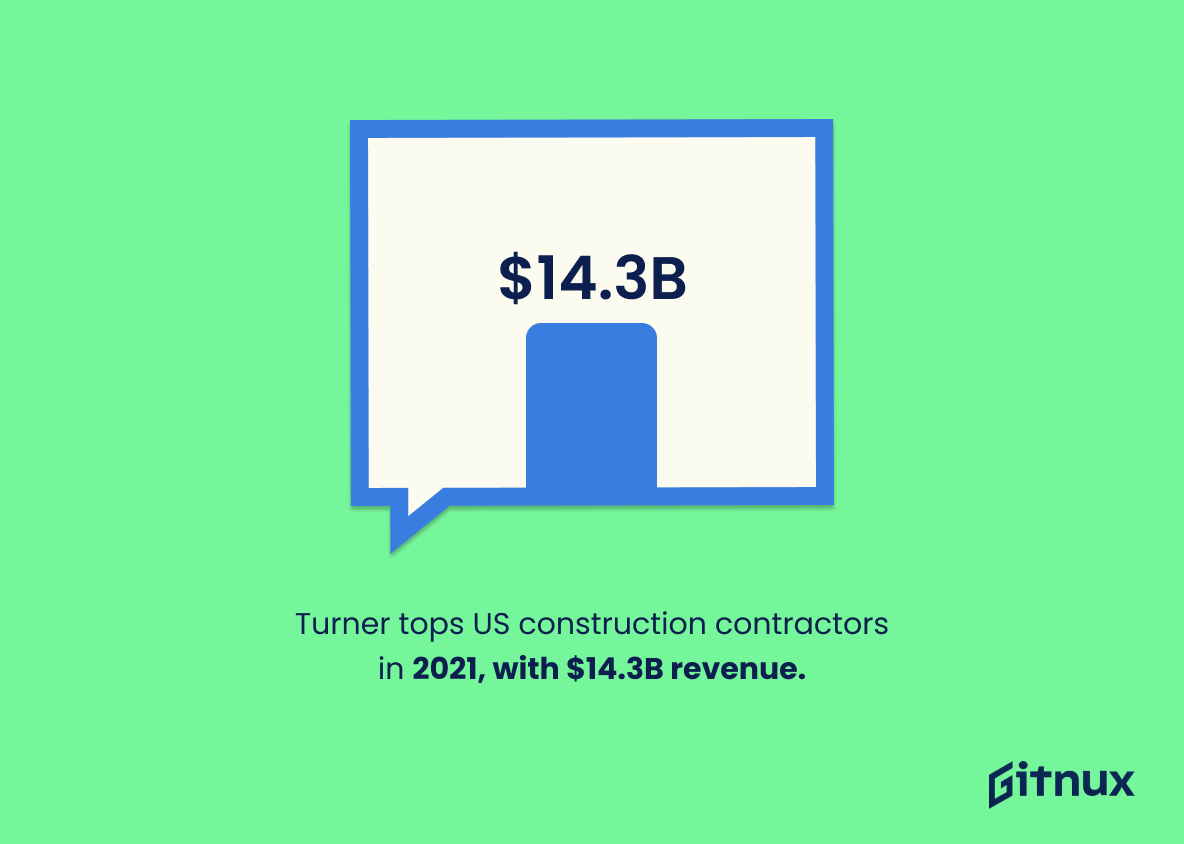The construction industry is an important part of the US economy, and understanding the statistics behind it can help us better understand the state of the industry. In this blog post, we’ll explore the latest US construction statistics and discuss how they can help us make better decisions about our construction projects.
We’ll also look at how the industry has changed over the years and what trends we can expect in the future. Finally, we’ll explore how these statistics can help us better understand the impact of construction on our economy.
US Construction: The Most Important Statistics
The number of production workers in the construction industry in the United States dropped from 9.52 million in 2008 to 6.96 million during the recession, but rose again to pre-recession levels in 2019.
The investment on public infrastructure has increased by 20 billion dollars in the past ten years, with a similar trend appearing in the total value of US new public construction put in place.
US Construction Statistics Overview
The US construction market size was valued at around 1.6 trillion US dollars in 2021, with the residential sector leading the way in spending.
This matters as it shows the potential for growth in the US construction market in the coming years.
Private construction investment in the US has grown for 10 years and is expected to continue to grow in 2022, with 1429.2 billion dollars being spent on private construction and 363.6 billion dollars being spent on public construction.
It could be indicative of a shift in the industry, with more focus being placed on private construction and less on public construction.
The number of production workers in the construction industry in the United States dropped from 9.52 million in 2008 to 6.96 million during the recession, but rose again to pre-recession levels in 2019.
This statistic matters because it shows the volatility of the construction industry in the United States, and how it is affected by economic downturns. It also shows the resilience of the industry and its ability to recover from economic shocks.
New York and Pennsylvania have the highest number of highway maintenance workers, while Delaware has the least.
This shows the importance of infrastructure maintenance in certain states, and how it can impact employment in those states.
The investment on public infrastructure has increased by 20 billion dollars in the past ten years, with a similar trend appearing in the total value of US new public construction put in place.
US spending on public transit and railway building in 2020 was 24.5 billion dollars, the highest investment since 2015. This investment is essential for the continued growth of the US economy and for providing citizens with reliable transportation options.
Sand and gravel prices rose to 11 dollars per metric ton in 2022, which is important for US construction statistics as it affects the cost of construction.
The PPI for construction materials and components has increased 242% since 1982. This indicates that the cost of construction materials is becoming increasingly expensive, which could lead to higher costs for construction projects.
The Turner Corporation was ranked the top US construction contractor in 2021, with 14.3 billion dollars in revenue, while Bechtel and Fluor Corporation dropped in the rankings.
Turner Corporation was the construction company with the highest revenue from new contracts in 2020, followed by STO Building Group.
Conclusion
In conclusion, US construction statistics offer a comprehensive overview of the state of the construction industry in the US. They provide valuable insight into the size and scope of the industry, the types of projects being undertaken, and the economic impact of the sector.
The data also provides a useful tool for assessing the current state of the industry and its future prospects. With the right data and analysis, construction professionals can make informed decisions about their businesses and the industry as a whole.
References
1 – https://www.statista.com/topics/974/construction/#topicOverview
2 – https://www.statista.com/statistics/226355/us-public-and-private-sector-construction/
3 – https://www.statista.com/statistics/193094/employment-in-production-within-us-construction-since-1996/
4 – https://www.statista.com/statistics/615821/highway-maintenance-employees-in-the-us-by-key-state/
5 – https://www.statista.com/statistics/238570/us-public-construction-spending-on-highway-and-street-projects/
6 – https://www.statista.com/statistics/783551/railroad-construction-expenditure-united-states/
7 – https://www.statista.com/statistics/219381/sand-and-gravel-prices-in-the-us/
8 – https://www.statista.com/statistics/195382/us-producer-price-index-of-construction-materials-since-1990/
9 – https://www.statista.com/statistics/234153/the-largest-us-construction-contractors-based-on-contracting-revenue/
10 – https://www.statista.com/statistics/259926/the-largest-us-construction-contractors-based-on-new-contracts/
